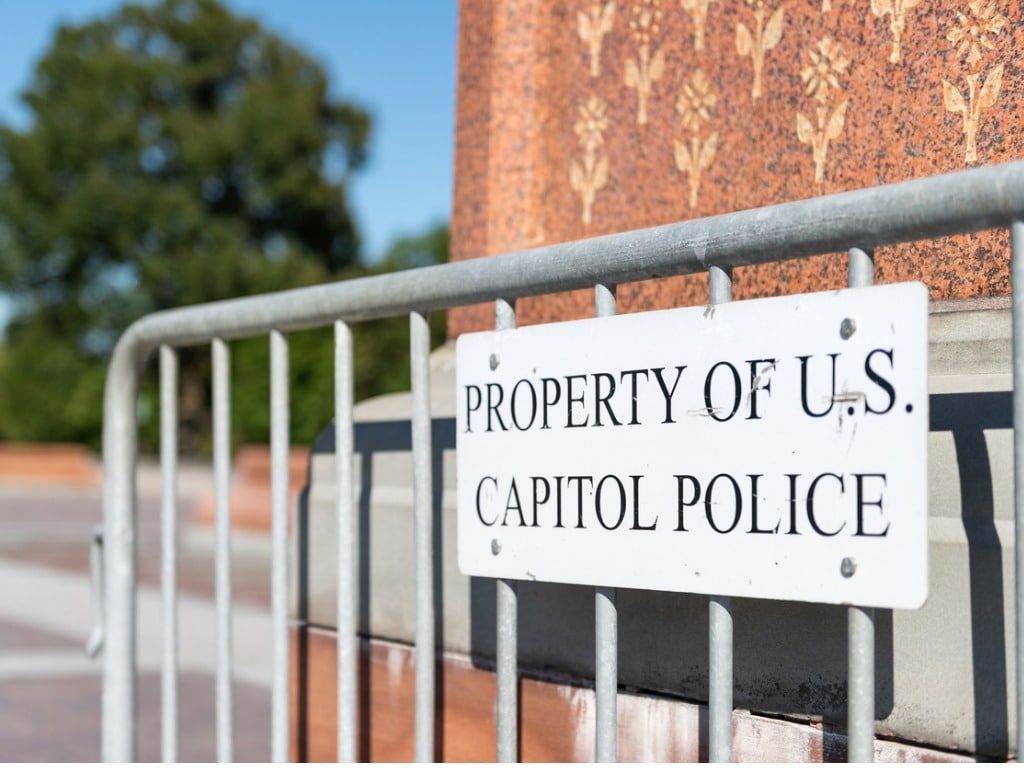On August 28, a whistleblower told lawmakers that hours before law enforcement officials forcefully removed protesters from Lafayette Square in Washington, D.C. this summer, federal officials “began to stockpile ammunition and seek devices that could emit deafening sounds and make anyone within range feel like their skin is on fire,” according to a Washington Post article.
In his sworn testimony that was sent to the House of Representatives’ Committee of Natural Resources, D.C. National Guard Major Adam D. DeMarco claimed that “defense officials were searching for crowd control technology deemed too unpredictable to use in war zones and had authorized the transfer of about 7,000 rounds of ammunition to the D.C. Armory” as protests in D.C. erupted in response to police killings and brutality and racial injustice.
On June 1, the D.C. protest made headlines when federal forces utilized tear gas, smoke bombs, stun grenades, and batons and shields to force protesters away from Lafayette Square so that President Trump could take photos in front of St. John’s Church. The Trump administration and the D.C. Park Police have since claimed that the police officers had been responding to violent protesters and that tear gas had not been used. However, DeMarco’s account “contradicts the administration’s claims that protesters were violent, tear gas was never used and demonstrators were given ample warning to disperse — a legal requirement before police move to clear a crowd,” according to The Washington Post.
DeMarco “was the senior-most D.C. National Guard officer on the ground that day and served as a liaison between the National Guard and U.S. Park Police” and disputes U.S. Park Police Chief Gregory Monahan’s claim that “protesters were given clear warnings to disperse via a Long Range Acoustic Device.” DeMarco told lawmakers that the device was not present on the scene so those warnings could not have transpired: he instead claims that officers were using handheld megaphones to communicate with the crowd on June 1, but the orders were too quiet for DeMarco, standing 30 feet away, to hear.
DeMarco’s testimony states that on June 1 in the early afternoon, “the Defense Department’s top military police officer in the Washington region sent an email to officers in the D.C. National Guard”, which inquired if the unit had the aforementioned Long Range Acoustic Device (LRAD) or an Active Denial System, a weapon “designed by the military to make people feel like their skin is burning when in range of its invisible rays.” The technology behind the Active Denial System, or “heat ray” device, “was developed to disperse large crowds in the early 2000s but was shelved amid concerns about its effectiveness, safety and the ethics of using it on human beings,” according to The Washington Post. In an email that DeMarco was copied on, the National Capital Region’s lead military police officer wrote that the Active Denial System “can provide our troops a capacity they currently do not have, the ability to reach out and engage potential adversaries at distances well beyond small arms range, and in a safe, effective, and nonlethal manner.”
An official from the Department of Defense has “downplayed DeMarco’s allegations, saying emails asking about specific weaponry were routine inventory checks to determine what equipment was available.” Neither the Defense Department nor the U.S. Army or D.C. National Guard have responded to “specific questions about munitions and their intended use.” The Defense Department official said that the federal police were not able to obtain the heat ray weapon or the LRAD in the “early days of protests in D.C.”
DeMarco appeared before the House Natural Resources Committee in late July and answered further questions from lawmakers on August 28 about the equipment law enforcement prepared.
Read The Washington Post’s article.
Read Adam DeMarco’s “Responses to Questions for the Record.”
